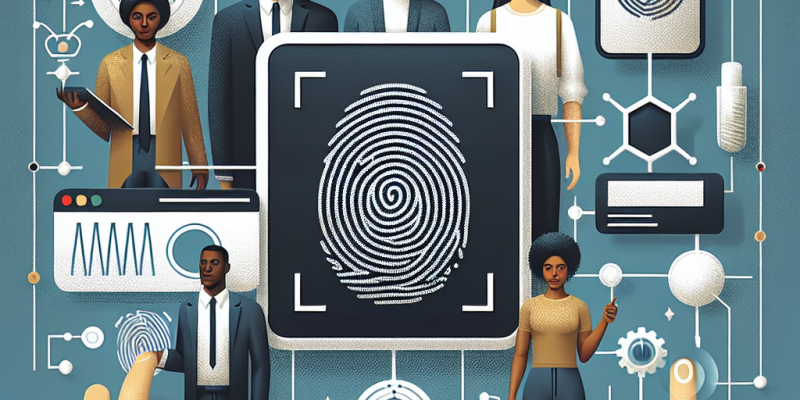Biometric Security: How Technology is Changing the Landscape of Personal Privacy

In an era marked by escalating concerns over personal privacy and security, biometric technology is increasingly emerging as a double-edged sword. While it promises enhanced safety and convenience in verifying identities, it also raises significant questions about personal privacy and the implications of its widespread adoption. This article explores how biometric security is transforming personal privacy, considering both its advantages and potential pitfalls.
Understanding Biometric Security
Biometric security refers to the use of unique physical or behavioral characteristics for identification and access control. Common biometric identifiers include fingerprints, facial recognition, voice patterns, iris scans, and even behavioral traits such as typing rhythm or gait. Biometrics provide a level of security that traditional methods like passwords and PINs cannot match, as they involve factors inherent to the individual.
The technological advancements driving this field have made biometric systems faster, more accurate, and increasingly accessible. From smartphones to security systems in commercial enterprises, biometric verification is becoming an integral part of everyday life.
The Advantages of Biometric Security
Enhanced Security Measures
One of the primary advantages of biometric security is its ability to provide superior protection against unauthorized access. Unlike passwords, which can be forgotten, stolen, or easily guessed, biometric traits are uniquely linked to an individual. This makes it significantly more difficult for anyone to bypass security protocols. For instance, fingerprint and facial recognition systems have shown remarkable accuracy, often achieving failure rates significantly lower than traditional methods.
Convenience and User Experience
Biometric security simplifies the user experience and eliminates the need for complex passwords. Mobile devices that utilize fingerprint authentication or facial recognition allow for quick and seamless access, enhancing usability. This convenience is especially essential in a fast-paced digital world where time efficiency is paramount.
Fraud Reduction
As biometric security systems become increasingly prevalent, the risk of identity theft and fraud diminishes. Traditional forms of identity verification can be easily compromised, but biometrics offer an additional layer of protection that is inherently tied to the user. Banks and financial institutions are starting to implement biometrics to enhance transaction safety and minimize fraudulent activities.
The Privacy Paradox
While biometric security offers various advantages, it simultaneously poses substantial challenges for personal privacy. The very nature of biometric data—being permanent and unchangeable—raises concerns that are not typically associated with passwords or PINs.
Data Collection and Storage Concerns
The collection and storage of biometric data introduce significant privacy risks. Organizations must store sensitive information in a secure manner to prevent unauthorized access. High-profile data breaches have illustrated the dangers of storing personal information electronically, leading many to question how safe their biometric data truly is. Unlike a password that can be changed, once biometric data is compromised, there is no recourse for the individual affected.
Surveillance and Tracking
The integration of biometric technology into surveillance systems further complicates the privacy landscape. Governments and corporations can employ biometric identifiers to track individuals without their consent, infringing upon personal freedoms. This capability raises ethical concerns about the erosion of privacy in public spaces and the potential for authoritarian misuse.
Consent and Autonomy
Finally, the issue of consent is pivotal in the discussion of biometric security. Users may not always be fully aware of how their data is being collected, used, or stored. The lack of transparency in many biometric systems can lead to situations where individuals unknowingly surrender their biometric information, thereby diminishing their control and autonomy over personal data.
Striking a Balance
To navigate the complex interplay between biometric security and personal privacy, it is imperative that clear regulations and ethical guidelines govern the use of biometric data. Policymakers, technology companies, and consumers must collaborate to establish standards for consent, data protection, and transparency. Technology can be developed and implemented with privacy considerations in mind, ensuring that biometric security enhances protection without compromising individual rights.
Educating the Public
Public awareness is crucial in fostering a culture of informed consent regarding the use of biometric technology. Individuals must be educated about their rights, the implications of sharing their biometric data, and the potential risks involved.
Advancing Secure Practices
On the technological front, advancements in encryption and decentralization can ameliorate some inherent risks associated with biometric data storage. Implementing robust security measures will be vital in protecting sensitive information from unauthorized access, ensuring that the benefits of biometric security do not come at the cost of personal privacy.
Conclusion
Biometric security represents a significant evolution in the landscape of personal privacy. As technology continues to evolve, so too will the challenges and opportunities presented by biometric systems. By fostering discussions about privacy, ethics, and security, society can strive to capitalize on the advantages of biometrics while safeguarding individual rights. The future will depend on our ability to balance security and privacy in this rapidly changing digital environment.














